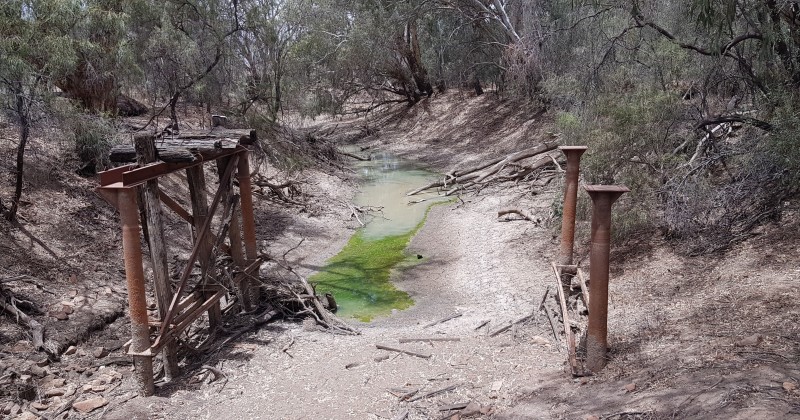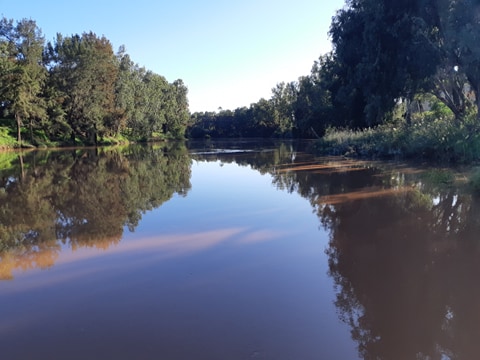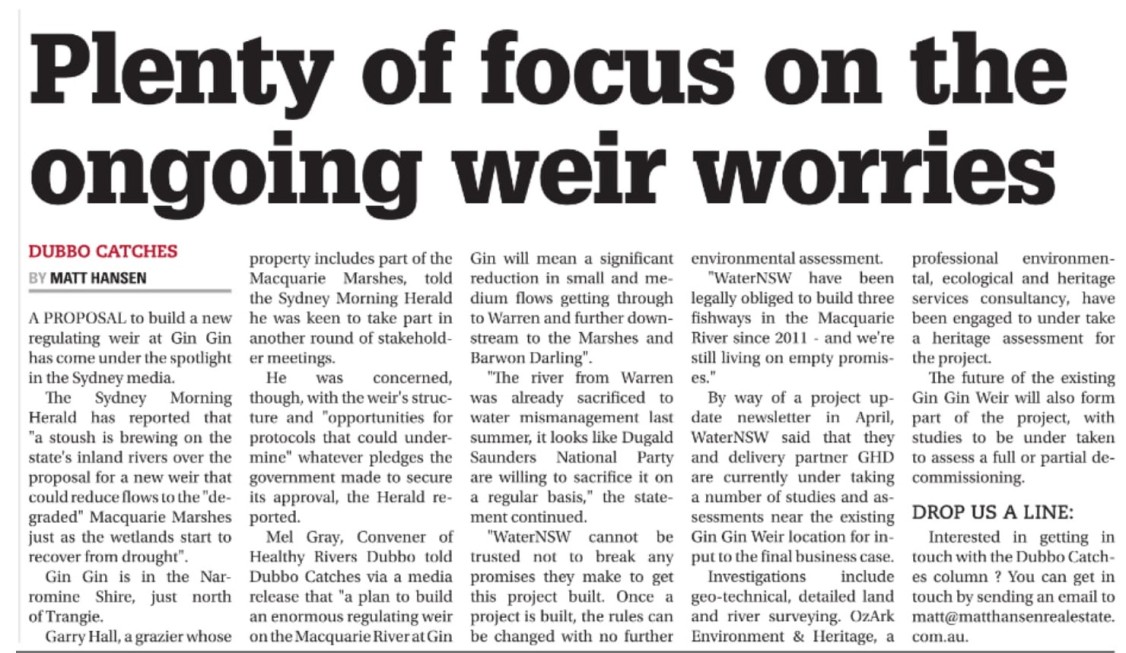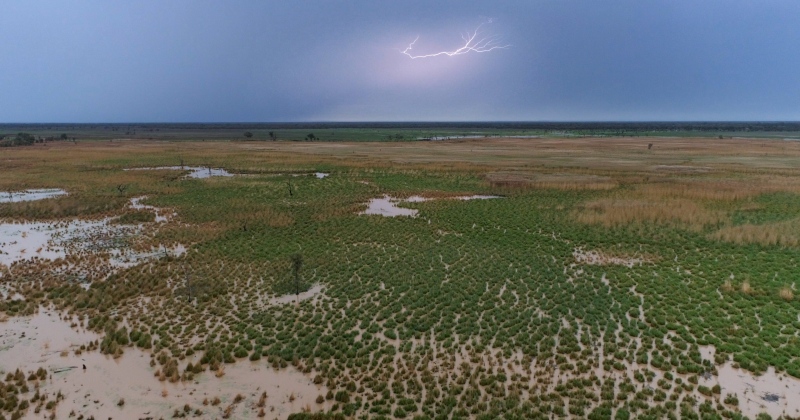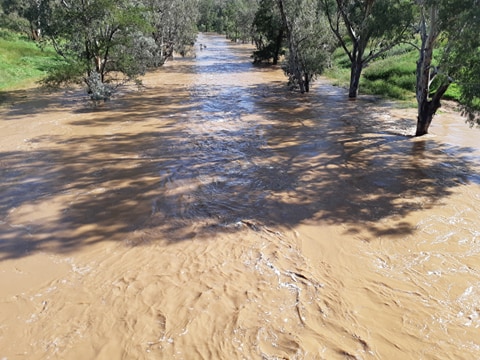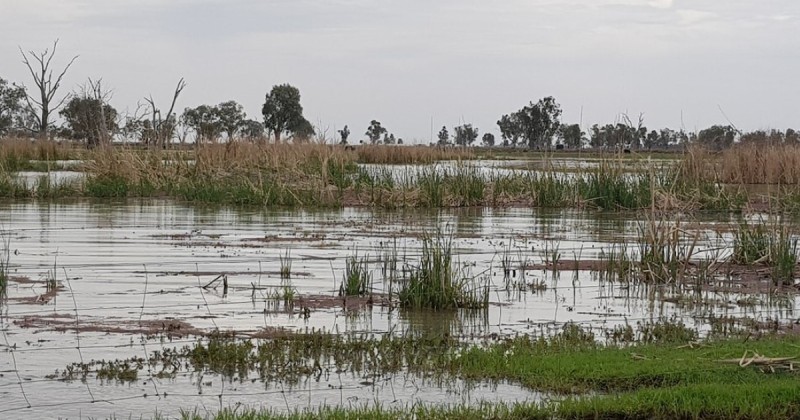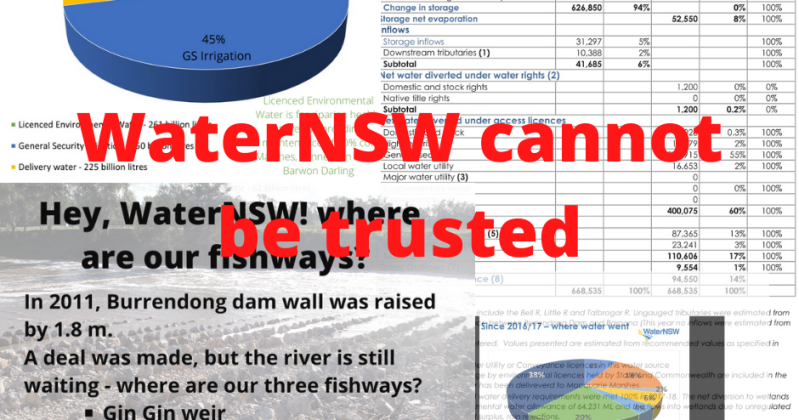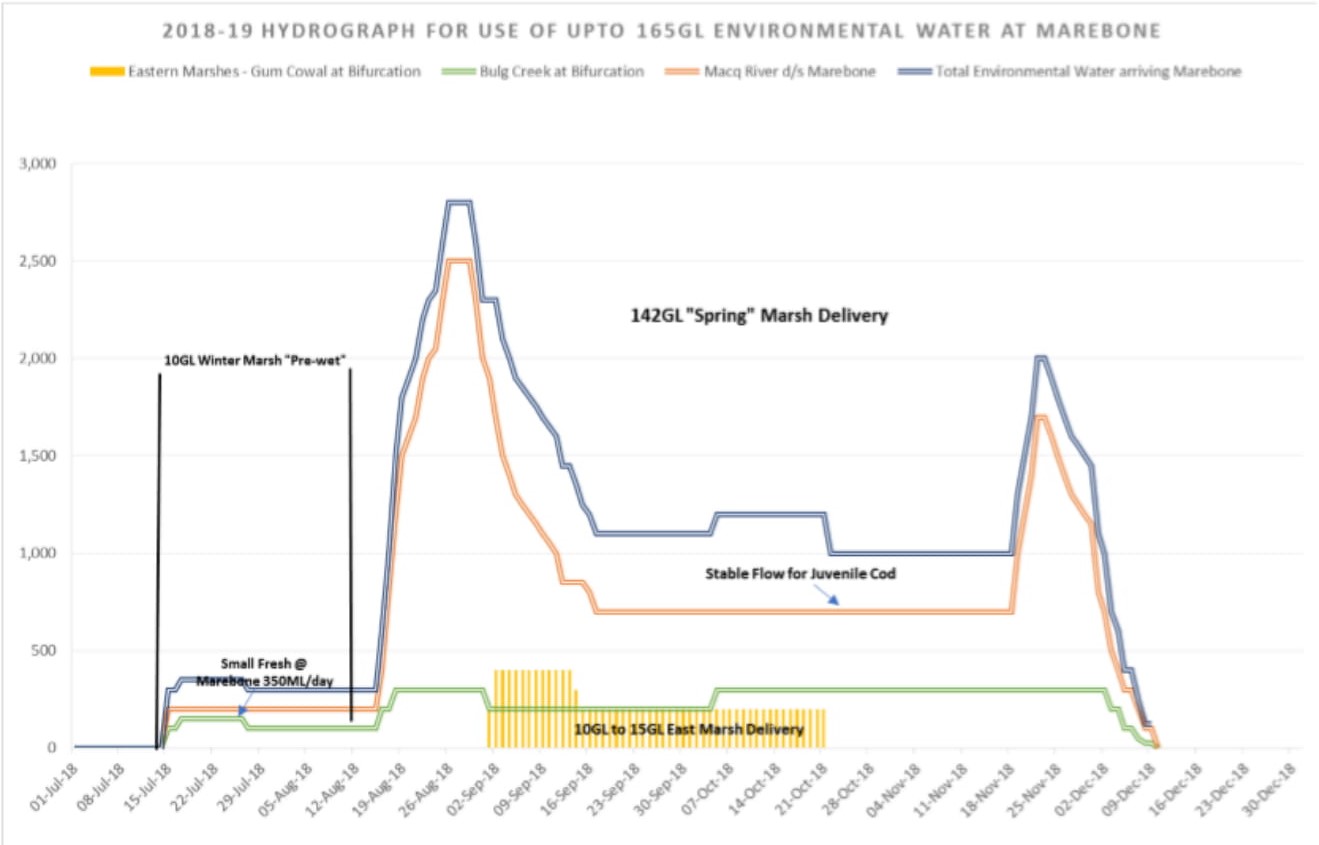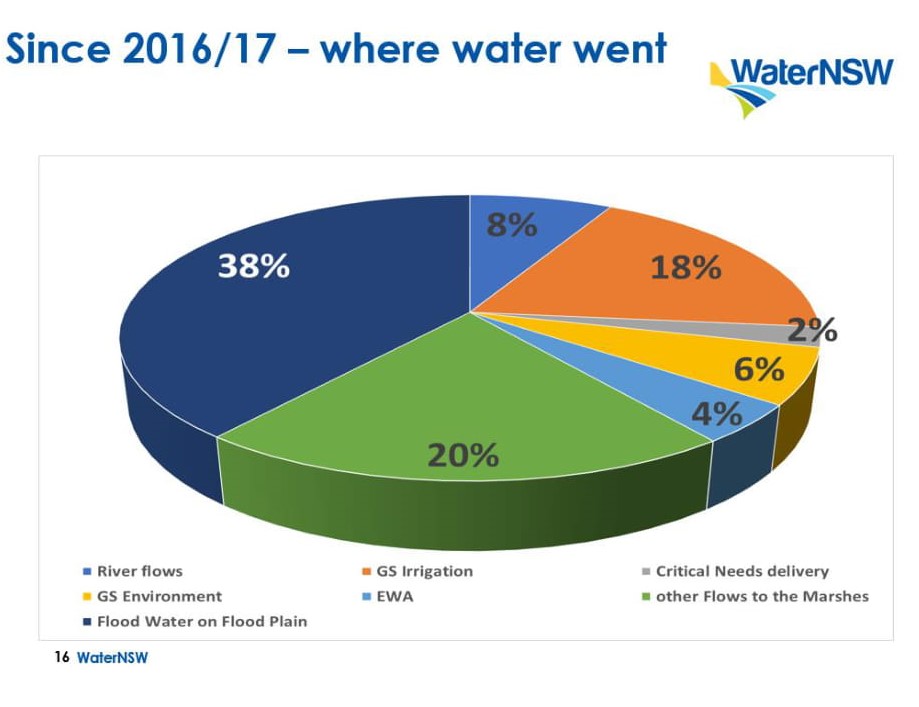Drought of Record defines the period when inflows into each catchment were at their historic lowest. The NSW Government uses the Drought of Record inflows to work out how much water can be extracted from the rivers in the year ahead, by coming up with an Available Water Determination.
In the case of several NSW rivers, including the Macquarie River, the Drought of Record is only based on the years before July 2004. That means that in future years, the current shocking drought will not be considered when the Government comes up with the Available Water Determination. Water managers will continue to assume Burrendong dam will fill every two years.

Until the rains came in early 2020, the Macquarie River was on track to stop flowing at Burrendong dam by October 2020, in what would have been an environmental, economic and social catastrophe.
Capping the Drought of Record to pre-2004 volumes was the doing of then NSW Water Minister Kevin Humphries in 2014. Listen as Mr Humphries explains that saving water ‘just in case’ there is another big drought would reduce general security license allocations by between 8 and 20%.
Kevin Humpries explains capping the Drought of Record
Current NSW Water Minister Pavey reinforced the Government’s priorities in Parliament in November 2019 where she said:
“To include a rule that automatically requires the water supply system to adjust to new record drought would potentially result in significant quantities of water being locked away from productive use.”
The NSW upper house passed a motion last week (SMH H.Alexander&P.Hannam 19/5/20) calling on Water Minister Melinda Pavey to use up to date drought figures before submitting the water resource plans to the Murray-Darling Basin Authority for accreditation.
[Quoting from the article] Independent MP Justin Field, who moved the motion, said the National Party had explicitly removed the 2001-2009 Millenium Drought from consideration in the 2014 water-sharing plans .. “That left regional towns facing running out of water, rivers starved and massive additional stresses in agricultural and river communities,” Mr Field said.”Now is the opportunity to fix these plans before this failed model is locked in for another decade risking future water shortages.”
Mr Field’s motion was supported by Labor, Greens, One Nation and Shooters, Fishers and Farmers MPs.
Dubbo mayor Ben Shields said the irrigation lobby had unduly influenced water policy and town supply was becoming a concern for the first time. Burrendong Dam dropped to 2 per cent capacity before recent rains pushed the level to 21 per cent.
“These sort of droughts are only going to get worse and the lack of water is only going to get worse,” Mr Shields said.
image: Macquarie River 22km downstream of Warren November 2019

